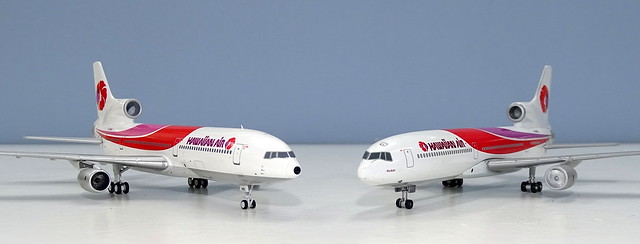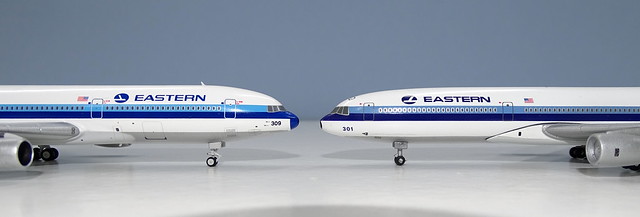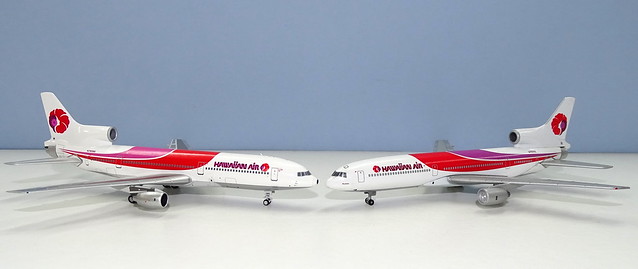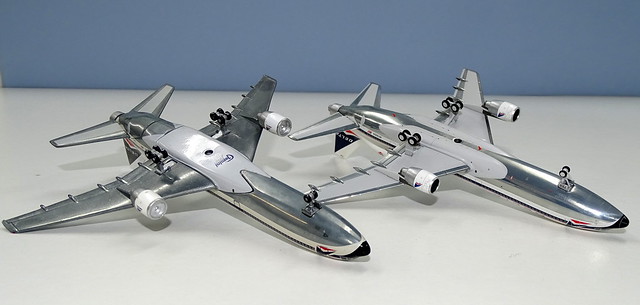- Home
-
My Models
-
AV History
- Airline History Blog
-
Airline Development
>
-
Liveries
>
- Aeroméxico Liveries
- Air China Special Liveries
- American Airlines Liveries
- British Airways Liveries
- Continental Airlines Liveries
- Delta Air Lines Liveries
- Eastern Air Lines Liveries
- Landor Liveries
- National Airlines Liveries
- Northeast Airlines Liveries
- Northwest Airlines Liveries
- Pan Am Liveries
- Trans World Airlines Liveries
- United Airlines Liveries
- Western Airlines Liveries
- Airbus A380s >
- Boeing 747 >
- Real Airport Histories >
- Plane Spotting >
- Aviation Stickers >
-
1:400 SCALE
- Collecting 1:400 Scale >
- The History of 1:400 Scale >
-
1:400 Brands
>
- Aeroclassics >
- Airshop Diecast
- AURORA Models
- Aviation400 (2007-2012)
- Big Bird 400 Your Craftsman
- Black Box Models
- Blue Box & Magic Models
- C Models
- Dragon Wings
- El Aviador 400
- Gemini Jets >
- JAL Collection / Jet Hut >
- Jet-X >
- MP4 Models
- NG Models >
- Panda Models >
- Phoenix Models >
- Seattle Models Co (SMA)
- Skyjets400
- Sovereign Models
- TucanoLine
- Witty Wings / Apollo
- Yu ModeLs
- 1:400 Custom Models >
- Production Numbers
- Zinc Rot
-
1:400 Moulds
- The Best Moulds >
- Airbus >
-
Boeing
>
- Boeing B-377 Stratocruiser
- Short Boeing 707s & 720s
- Boeing 707-320/420
- Boeing 717
- Boeing 727-100
- Boeing 727-200
- Boeing 737-100/200
- Boeing 737-300 >
- Boeing 737-400
- Boeing 737-500
- Boeing 737-600
- Boeing 737-700/800/900 >
- Boeing 737 MAX
- Boeing 747-100/200 >
- Boeing 747-400 >
- Boeing 747SP
- Boeing 747-8 Interactive
- Boeing 747LCF Dreamlifter
- Boeing 757-200 >
- Boeing 757-300
- Boeing 767-200
- Boeing 767-300
- Boeing 777-200
- Boeing 777-300
- Boeing 787
- British >
- Douglas >
- Lockheed >
- Other >
- Chinese >
- Soviet >
- Smallest Moulds in 1:400
-
1:400 Reviews
-
Model News
- Model Blog
-
New Mould Samples
>
- Aviation400 >
- JC Wings >
-
NG Models 400 Scale
>
- Airbus A318
- Airbus A319/320 CEO
- Airbus A319/320 NEO
- Airbus A321CEO & NEO
- Airbus A330-200/300
- Airbus A330 Beluga XL
- Airbus A330-800/900
- Airbus A340-200/300
- Airbus A350-900
- Airbus A350-1000
- Boeing 737-600/700/900
- Boeing 737-600 Refresh
- Boeing 737-800
- Boeing 737 MAX-8/MAX-9
- Boeing 737 MAX-7/MAX-10
- Boeing 747-100
- Boeing 747-200
- Boeing 747-400
- Boeing B747SP
- Boeing 747-8I
- Boeing 747-8F
- NG 747s Together
- Boeing 757-300
- Boeing 767-200/300 >
- Boeing 767-400 >
- Boeing 777-200
- Boeing 777-300/300ER
- Boeing 787-8
- Lockheed L-1011 Tristar
- Lockeed Tristar 500
- McDonnell Douglas MD-80
- McDonnell Douglas MD-87
- Tupolev Tu-154
- Tupolev Tu-204/Tu-214/Tu-234
- NG Models 200 Scale >
- Phoenix Models >
- Yu ModeL >
-
1:600 SCALE
- DIORAMAS
|
This year has marked the twentieth anniversary of 1:400 scale and several manufacturers (notably Gemini Jets and Aeroclassics) have been celebrating their 20th year in business. Meanwhile relative newcomer NG Models has been slowly getting its Tristar production into gear, which gives an opportunity to compare some models from the dawn of the scale with some from recent month's.
Above: The Classic Gemini L-1011 Tristar mould dating from 1999
First off let me say this is in no way meant to denigrate Gemini Jets or their old Tristar models. I really like the old Gemini L-1011 and it has been a solid member of my collection for many years, plus has historically had a strong price on the seconds market. In fact I am not necessarily selling them off as new NG Tristars are released.
Above: Classic Gemini
The idea of this post if merely to compare and contrast how 1:400s have changed as technology among all the manufacturers has improved over the past two decades. It just so happens that several of the recent NG L-1011s make a good comparison for this with some old GJ L-1011s, made between 1999 and 2001, since they cover the same ground.
Above: New NG Models
Pleasingly the old Gemini models have aged well. They show no signs of physical degradation that afflicts some older models (bubbling on Blue Box and Magic releases, Zinc Rot on specific Aeroclassics, SMA and Gemini releases from certain time periods). In fact the old Tristars stilll look as good as the day they were bought. I should add that since I only started collecting in around 2009 I acquired these early models via Waffle Collection sales.
As you'd expect there have been a number of major improvements in 1:400 production since the early years.
Seamless Fuselage Moulds
Nowadays almost all new castings come with slot in wings and seamless fuselages. Quite a few older moulds still have cradle mount moulds, and so a wing/fuselage seam, but often these are perfectly acceptable. Certainly excellent seamed moulds like the Aeroclassics A300 are eminently preferable to the seamless example from Dragon Wings.
Back in the early 2000s the only manufacturer producing slot in wing moulds was actually Dragon Wings. The classic Gemini Tristar, as with many early Geminis, has two seam lines - one for the wing cradle and another for addition of the horizontal stabilisers.
The NG Tristars are unusual in that the tail is actually part of the fuselage moulding so there is no join line between the two units. This is highly unusual in 1:400 scale, even in 2019, but is important for a type like the Tristar where the no 2 engine curves into the roofline.
Undercarriage
Undercarriage is an area where there has been a massive improvement in detailing and complexity. Early moulds often had stalk-like gearlegs and sometimes even lacked nosegear doors. The old Gemini L-1011s have quite simple gearlegs but at least they are well proportioned.
They also have static wheels, something you could arguably call better than the new rolling gears, which are so prone to damage and tyre loss. The detailing on the maingear legs has also come a long way.
Engines
Engines are still highly variable in 1:400. The old Gemini L-1011 actually has nicely detailed fan blades and nacelles but, as with almost all older models, has bright silver engine interiors. The NG Tristar's engines are a slightly better shape but aren't so far away from the Gemini's. They do not for example have see through engines (as many newer mould 787, A330s and A350s do) and NG haven't gone for the rotating fan blades that Phoenix has developed either. I have to say neither of these options are important to me so I'm happy for solid engines at this scale, as long as they are suitably painted.
Aerials
Probably the biggest change of the past decade for 1:400 scale (aside from Aeroclassics) has been the adoption of aerials and Wi-Fi domes. I know some bemoan them but I have only rarely had any issues with them detaching and most of the time they are well sized and shaped. Certainly NG has done a good job with them on their Tristar.
Printing Detail
One area that has been revolutionised by digital technology is the detail possible in printing. The old Gemini Tristars have very nice printing but compared to the pitot tubes, door locks, engine panel lines, nosecone rings and more you can see on the NG models you can see the progress two decades has allowed.
Summary
I am pleased to say that 1:400 scale appears in excellent health in its 20th year and all the manufacturers in this scale are capable of producing high quality models, when they put their minds to it. Modern tools mean that what is possible now far surpasses what was possible in 1999, but it also says something of the quality of the older models that they rarely look out of place displayed next to far newer editions. It'll be interesting to see how the model improve over the next 20 years.
3 Comments
Garry
19/11/2019 03:19:21 pm
I have to say that I only got collecting in 2006! My first was a 1:400
Reply
Frank Warzocha
22/11/2019 07:20:51 am
Rich,you stated that Aeroclassics of today are just not that good. Are you just talking about the L1011 ? Cause you mentioned other brands and aircraft after that. No other company has produced the different eras of commercial aviation then Aeroclassic with outstanding workmanship.
Reply
Richard Stretton
22/11/2019 06:40:05 pm
You misunderstand Frank. I didn't say the Aeroclassics of today aren't that good, that was Garry in a comment. I personally think the AC moulds are fine, except for the Tristar which was awful. I am a massive fan of Aeroclassics models
Reply
Leave a Reply. |
Author
I'm Richard Stretton, an aviation enthusiast and major collector of 400 scale model aircraft. This blog discusses ongoing events in the world of 400 scale. This site is free. Please donate to keep it going.
|
- Home
-
My Models
-
AV History
- Airline History Blog
-
Airline Development
>
-
Liveries
>
- Aeroméxico Liveries
- Air China Special Liveries
- American Airlines Liveries
- British Airways Liveries
- Continental Airlines Liveries
- Delta Air Lines Liveries
- Eastern Air Lines Liveries
- Landor Liveries
- National Airlines Liveries
- Northeast Airlines Liveries
- Northwest Airlines Liveries
- Pan Am Liveries
- Trans World Airlines Liveries
- United Airlines Liveries
- Western Airlines Liveries
- Airbus A380s >
- Boeing 747 >
- Real Airport Histories >
- Plane Spotting >
- Aviation Stickers >
-
1:400 SCALE
- Collecting 1:400 Scale >
- The History of 1:400 Scale >
-
1:400 Brands
>
- Aeroclassics >
- Airshop Diecast
- AURORA Models
- Aviation400 (2007-2012)
- Big Bird 400 Your Craftsman
- Black Box Models
- Blue Box & Magic Models
- C Models
- Dragon Wings
- El Aviador 400
- Gemini Jets >
- JAL Collection / Jet Hut >
- Jet-X >
- MP4 Models
- NG Models >
- Panda Models >
- Phoenix Models >
- Seattle Models Co (SMA)
- Skyjets400
- Sovereign Models
- TucanoLine
- Witty Wings / Apollo
- Yu ModeLs
- 1:400 Custom Models >
- Production Numbers
- Zinc Rot
-
1:400 Moulds
- The Best Moulds >
- Airbus >
-
Boeing
>
- Boeing B-377 Stratocruiser
- Short Boeing 707s & 720s
- Boeing 707-320/420
- Boeing 717
- Boeing 727-100
- Boeing 727-200
- Boeing 737-100/200
- Boeing 737-300 >
- Boeing 737-400
- Boeing 737-500
- Boeing 737-600
- Boeing 737-700/800/900 >
- Boeing 737 MAX
- Boeing 747-100/200 >
- Boeing 747-400 >
- Boeing 747SP
- Boeing 747-8 Interactive
- Boeing 747LCF Dreamlifter
- Boeing 757-200 >
- Boeing 757-300
- Boeing 767-200
- Boeing 767-300
- Boeing 777-200
- Boeing 777-300
- Boeing 787
- British >
- Douglas >
- Lockheed >
- Other >
- Chinese >
- Soviet >
- Smallest Moulds in 1:400
-
1:400 Reviews
-
Model News
- Model Blog
-
New Mould Samples
>
- Aviation400 >
- JC Wings >
-
NG Models 400 Scale
>
- Airbus A318
- Airbus A319/320 CEO
- Airbus A319/320 NEO
- Airbus A321CEO & NEO
- Airbus A330-200/300
- Airbus A330 Beluga XL
- Airbus A330-800/900
- Airbus A340-200/300
- Airbus A350-900
- Airbus A350-1000
- Boeing 737-600/700/900
- Boeing 737-600 Refresh
- Boeing 737-800
- Boeing 737 MAX-8/MAX-9
- Boeing 737 MAX-7/MAX-10
- Boeing 747-100
- Boeing 747-200
- Boeing 747-400
- Boeing B747SP
- Boeing 747-8I
- Boeing 747-8F
- NG 747s Together
- Boeing 757-300
- Boeing 767-200/300 >
- Boeing 767-400 >
- Boeing 777-200
- Boeing 777-300/300ER
- Boeing 787-8
- Lockheed L-1011 Tristar
- Lockeed Tristar 500
- McDonnell Douglas MD-80
- McDonnell Douglas MD-87
- Tupolev Tu-154
- Tupolev Tu-204/Tu-214/Tu-234
- NG Models 200 Scale >
- Phoenix Models >
- Yu ModeL >
-
1:600 SCALE
- DIORAMAS

















 RSS Feed
RSS Feed